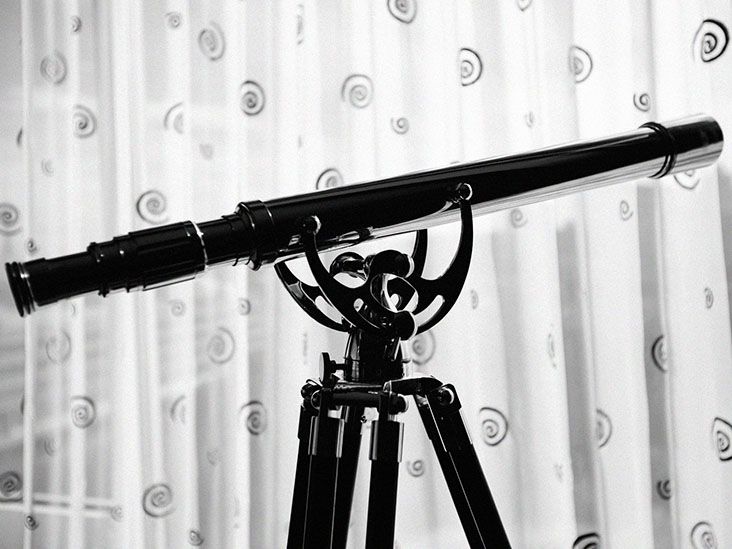Low vision rehabilitation may help improve the quality of life of people living with geographic atrophy, an advanced form of dry age-related macular degeneration.
Geographic atrophy causes diminishing vision and can lead to near-complete central vision loss in the affected eye. It is a progressive condition. This means it will generally worsen over time, leading to decreased quality of life and safety issues.
Low vision rehabilitation may help improve quality of life, increase safety, and help a person maintain more independence.
Learn more about low vision rehabilitation for people living with geographic atrophy.
Low vision rehabilitation is a therapeutic service that helps people develop strategies to manage their reduced vision in their homes, workplaces, and communities.
The goal is to help improve a person’s quality of life and reduce the difficulties they experience due to low vision.
Low vision rehabilitation may include:
- identifying goals
- teaching a person how to use assistive devices
- providing training and education
Low vision rehabilitation often involves training people to use assistive devices and to navigate their home, work, and community environments.
Sometimes, low vision rehabilitation may involve teaching a person or their caregiver how to manage daily activities. Service providers may help with:
- improving lighting around the house
- putting safety measures in place in the home
- assisting with meal preparation
- training a person to read using magnifying devices
- keeping financial records and other writing- or reading-intensive activities
- labeling different items with large print and other markers
Rehabilitation services may also help with other tasks and training that will enable a person with reduced vision to maintain independence and improve their overall quality of life.
Several devices can help people with low vision. Low vision rehabilitation services can recommend appropriate devices for a person and train them on when and how to properly use these devices.
Assistive devices that may be useful include:
- Handheld or spectacle-mounted telescopes: These help a person see at longer distances, such as when watching TV or looking at objects from farther away.
- Video magnification devices, such as closed-circuit television (CCTV) devices: These enlarge objects that are both close and far.
- Spectacle-mounted magnifiers: These devices can help with close-up activities, such as reading, sewing, typing, or other activities.
- Assistive technology: These are apps and programs, such as screen readers, that allow a person full access to their computer, smartphone, or tablet.
Several other items, including large-print books or newspapers, talking wristwatches, and audiobooks, can also help people with low vision.
Low vision rehabilitation for geographic atrophy may provide several benefits for a person living with the condition, such as:
Retaining functional vision
Some evidence suggests that low vision rehabilitation may help preserve a person’s ability to use their vision.
Researchers in a 2020 study found some evidence that different therapies associated with rehabilitation services helped people retain significantly better
Improving quality of life
One of the primary goals of low vision rehabilitation is to improve the quality of life for the person with low vision.
Healthcare professionals often use quality-of-life questionnaires or other assessments to measure a person’s quality of life before, during, and after rehabilitation services. This can help them judge which interventions and devices are working.
There is no single benchmark for success.
Healthcare professionals
Increasing physical safety
Another goal of low vision rehabilitation for geographic atrophy is improving safety for people with reduced vision. Meeting this goal may involve several interventions and changes in the person’s environment, such as:
- labeling medications clearly with large print, colors, or other markings
- using reflective tape to mark steps, ledges, and other potential hazards
- changing the layout of rooms to help reduce the likelihood of tripping
- increasing lighting in the home
Low vision rehabilitation for geographic atrophy may help improve a person’s quality of life. However, there are
Additionally, some evidence suggests that low vision rehabilitation services may be ineffective in improving health- or vision-related quality of life.
In a
They found low to moderate evidence supporting the effectiveness of the services for improving vision-related quality of life. They also suggest that rehabilitation may have an impact on mental health outcomes such as depression.
The review authors suggest improving assessment standards and adding more studies on the effectiveness of various interventions across several groups of people.
Still, organizations such as the American Optometric Association suggest that low vision rehabilitation services can help improve quality of life and increase independence. Many people who use these services may find them beneficial.
Low vision rehabilitation for geographic atrophy may help improve quality of life and increase independence in people with geographic atrophy. The services can help meet several needs, including improving safety at home, helping with vision-related tasks, and teaching a person to use assistive devices.
The overall success rate of low vision rehabilitation is difficult to measure. In part, this may be due to inconsistencies in the assessment of success and differences in approaches and devices used.
The services may help improve a person’s quality of life and safety and possibly slow the progression of the disease.

